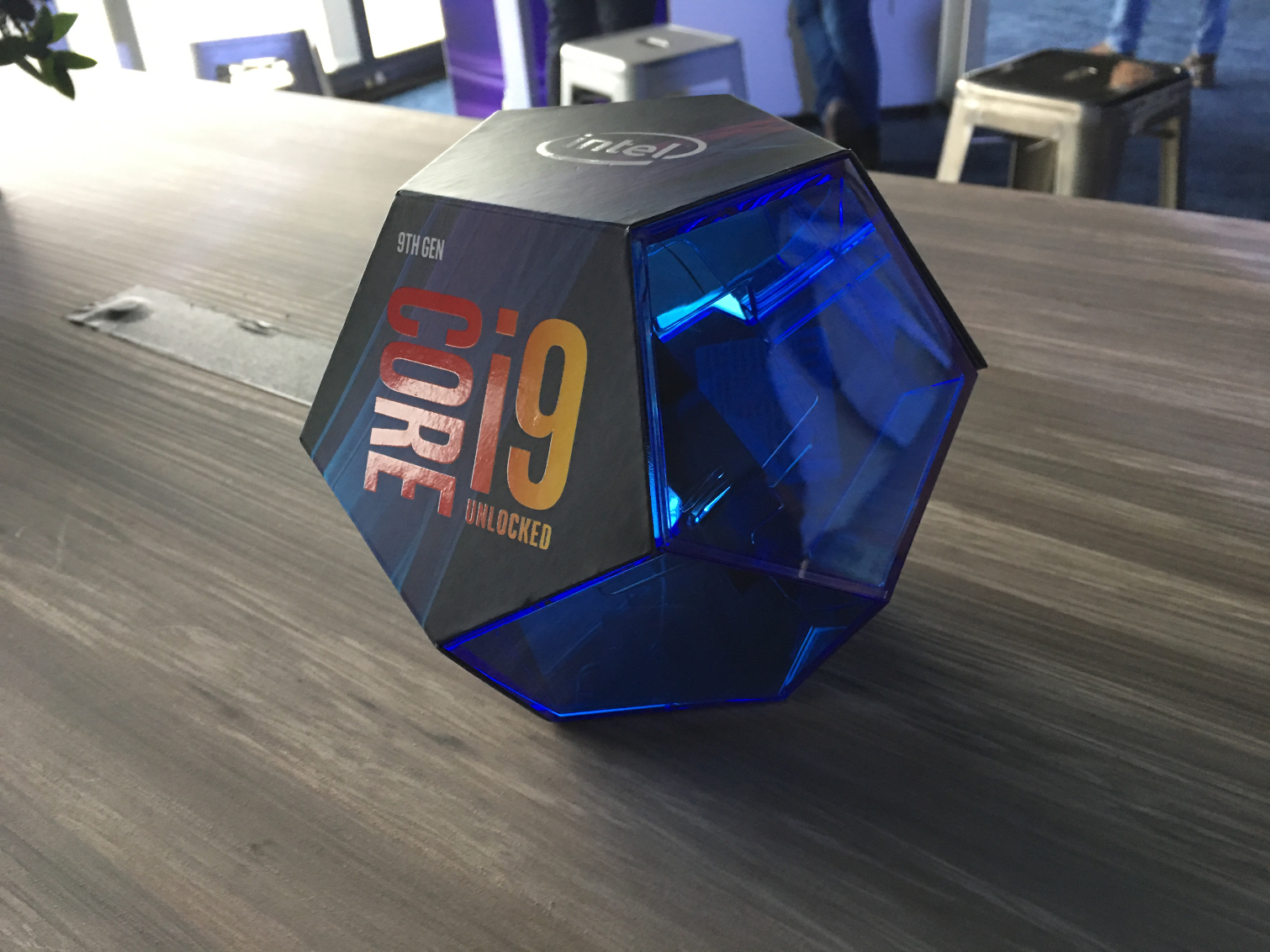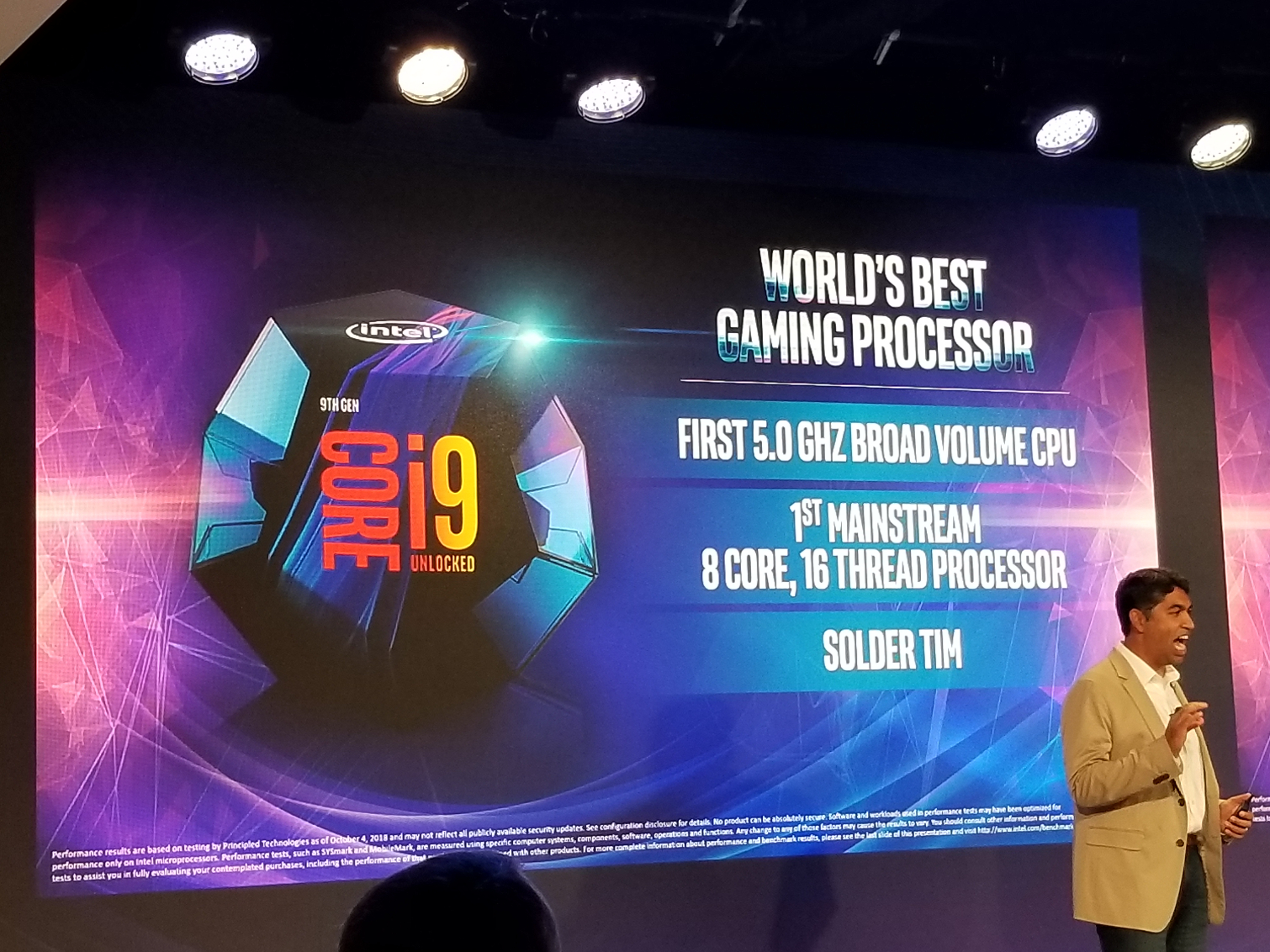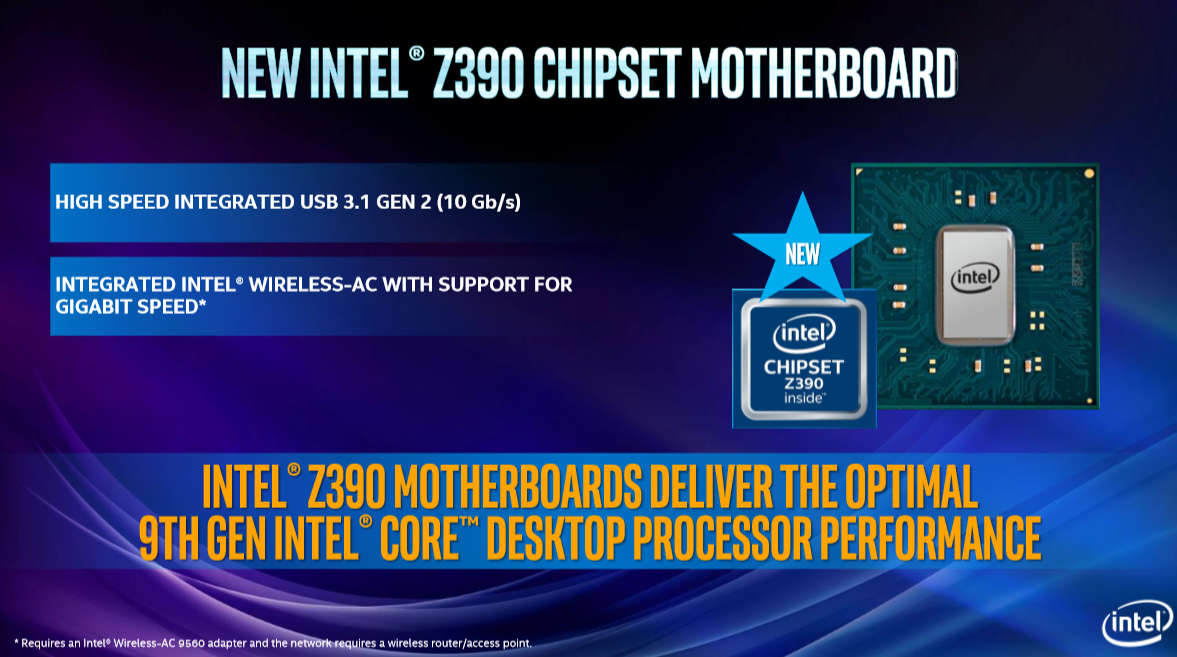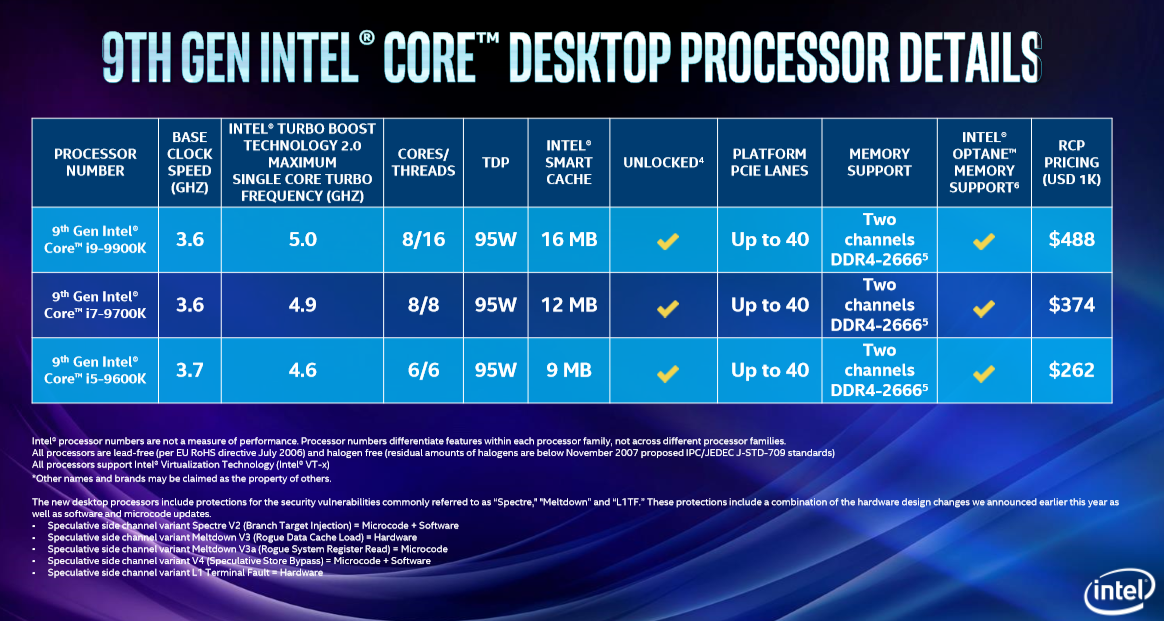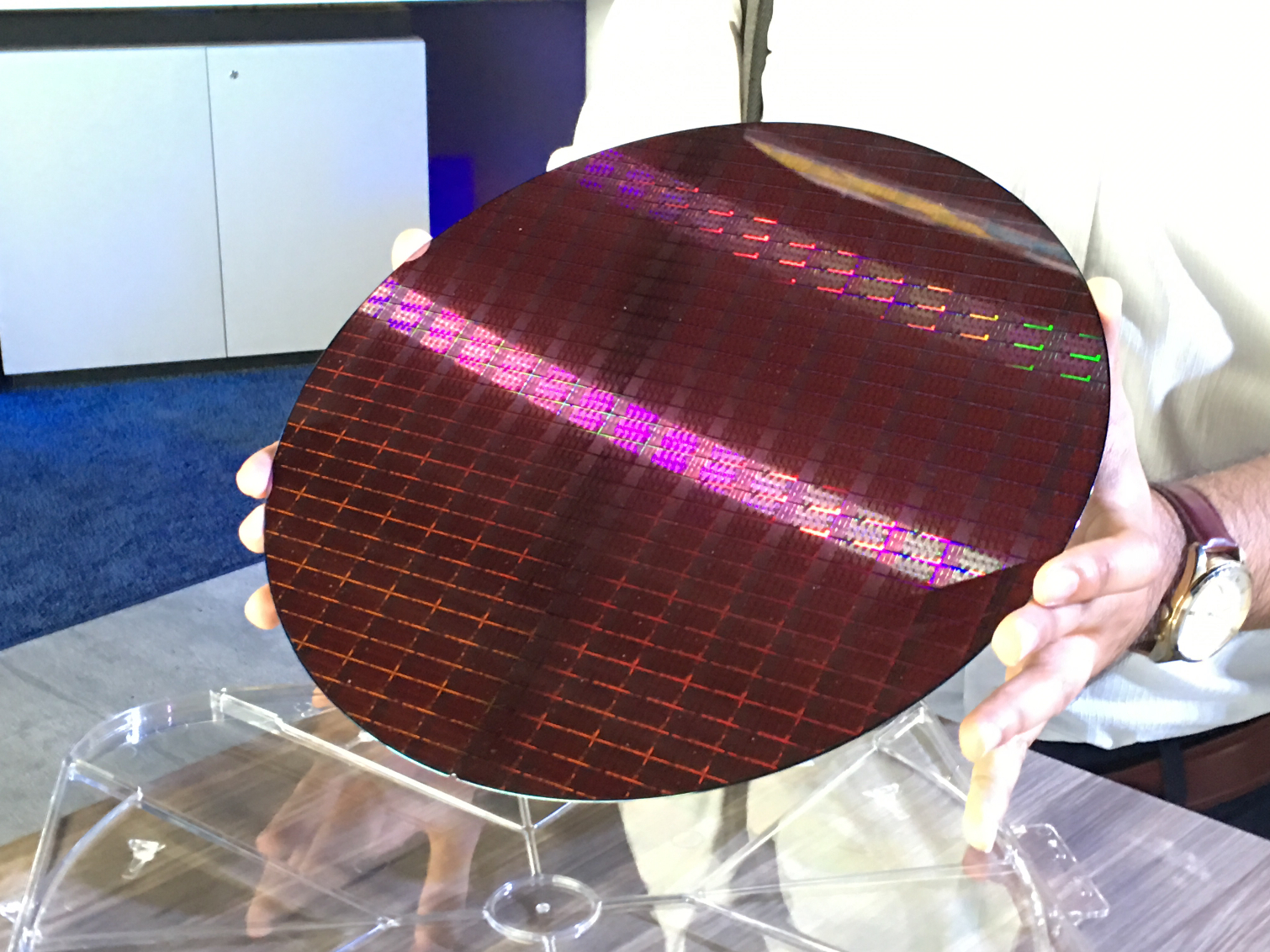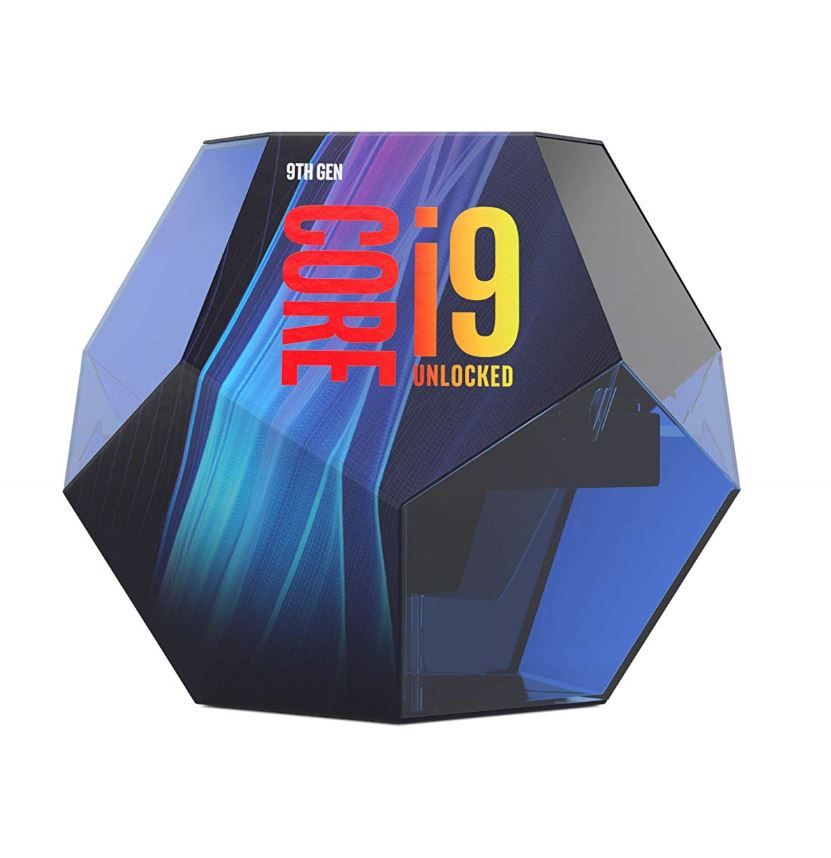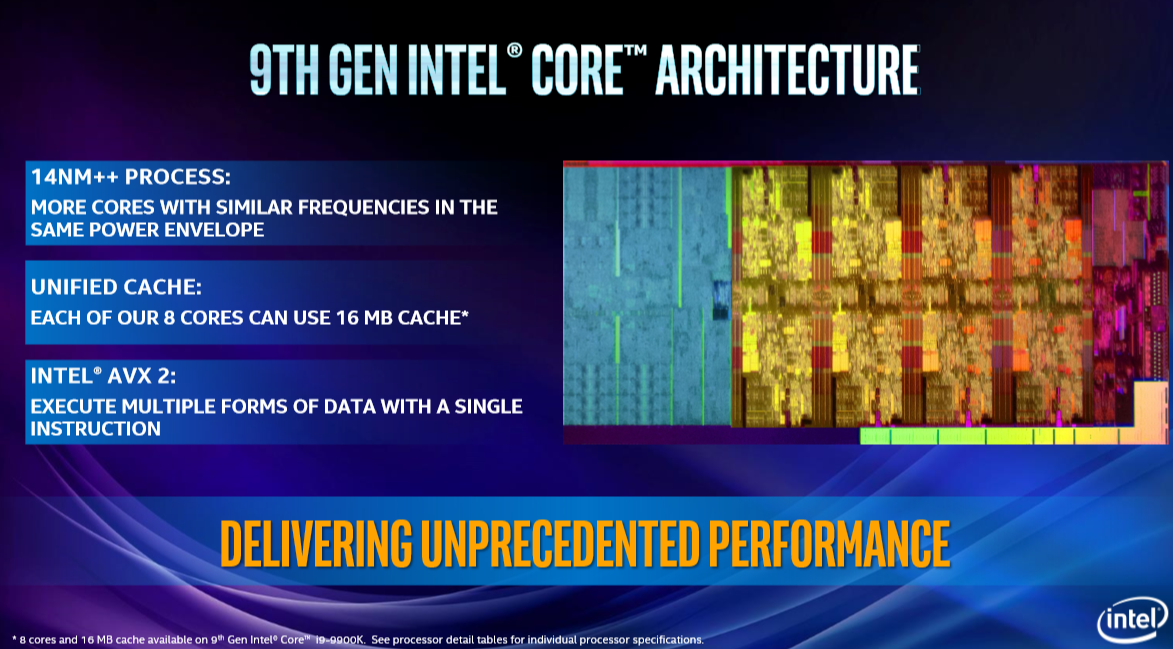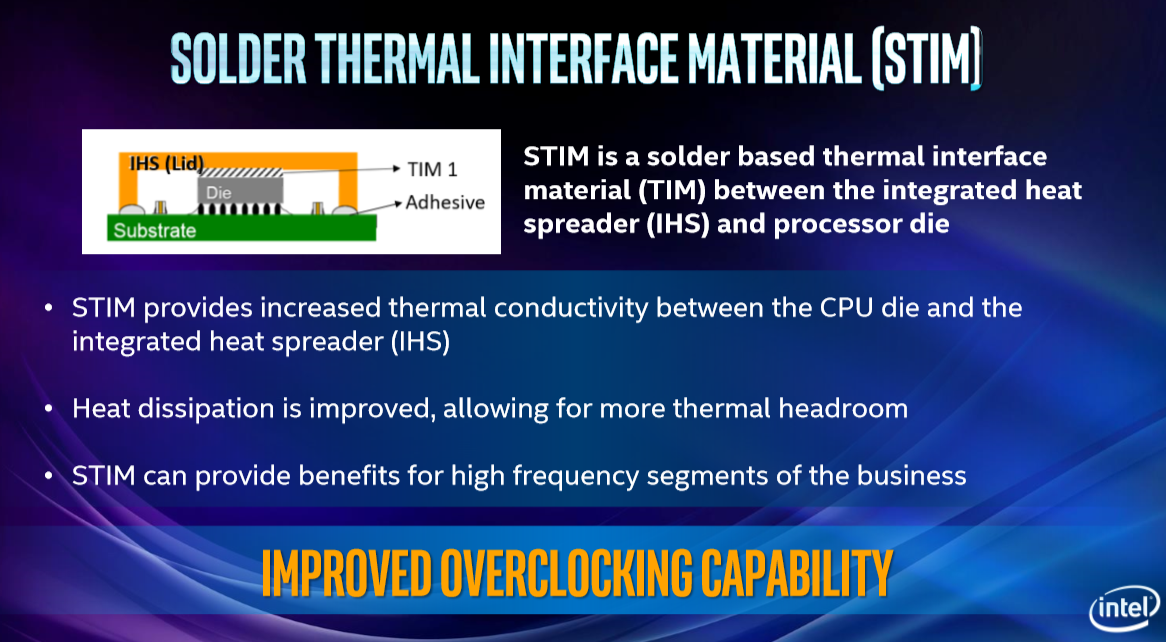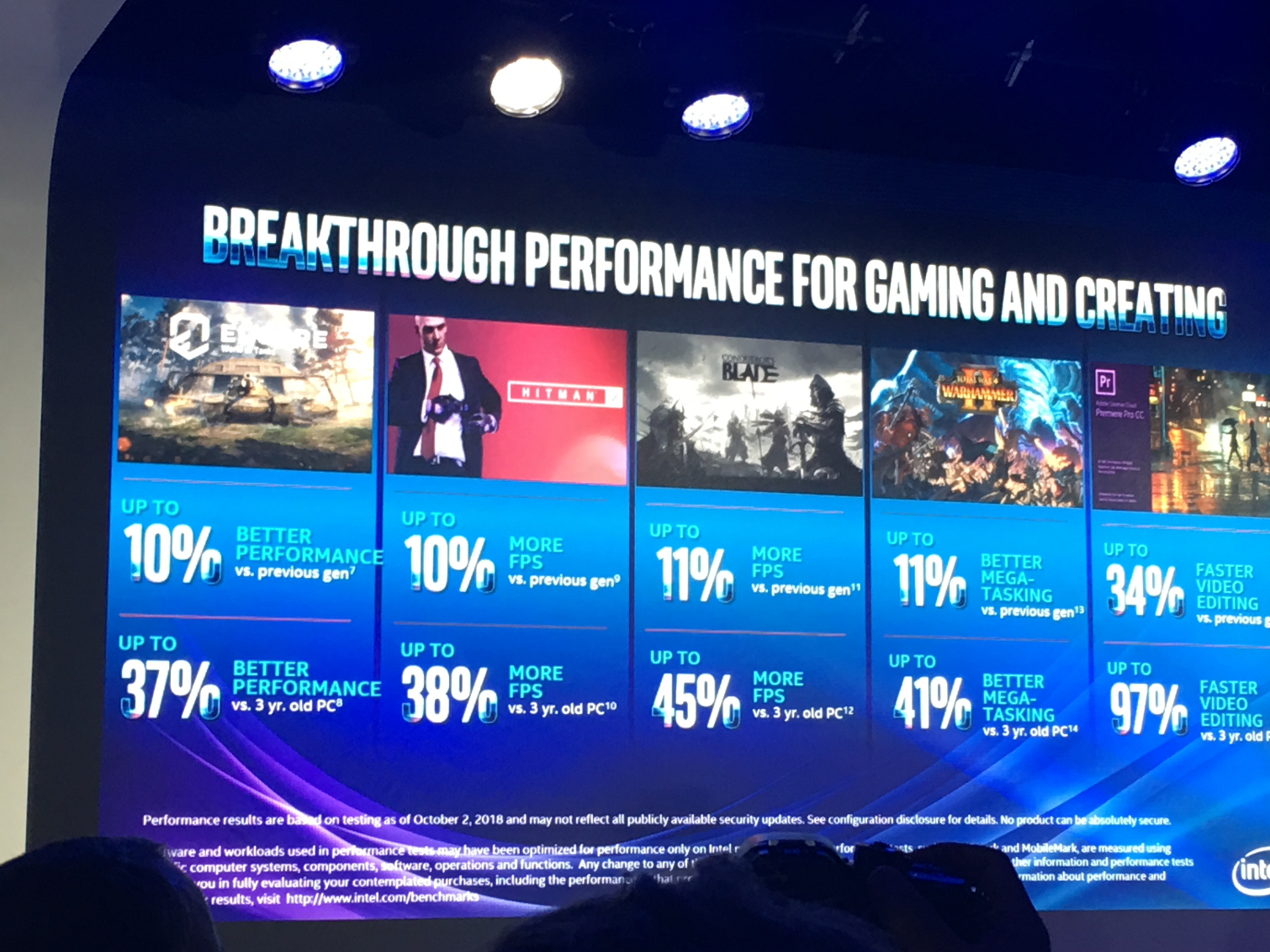Intel Announces 9th Generation Core CPUs, Eight-Core Core i9-9900K
Intel finally unveiled its new 9th Generation Core processors at its Fall Desktop Launch Event here in New York today. The $488 Core i9-9900K serves as the flagship of the new lineup, offering eight cores and 16 threads. The processors are available for pre-order today, with broad availability on October 19. Intel also released several other additions to its new line of 9th Generation Core processors and announced that the new processors come with Solder Thermal Interface Material (STIM).
The new lineup slots into existing 300-series motherboards after a BIOS update, but Intel's partners also have a slew of Z390 motherboards available, which you can see here.
Intel Coffee Lake Refresh
As expected, Intel splits its families into Core i7 and i5 models, but the 9th Generation Core processors also mark the debut of the new eight-core Core i9 series for the desktop. As per usual, all of Intel's "K" Series processors come with the 14nm++ process, an integrated UHD 630 graphics engine, unlocked multipliers that enable overclocking, and support dual-channel DDR4-2666. Much like the Cascade and Whiskey Lake processors we recently covered, Intel's Coffee Lake Refresh lineup of processors also comes with in-built silicon mitigations for the Meltdown and L1TF (Foreshadow) vulnerabilities.
| Vulnerability | Coffee Lake Refresh/Whiskey Lake Mitigation | Cascade Lake Mitigation |
|---|---|---|
| Variant 1 (Spectre) | Operating System | Operating System/VMM |
| Variant 2 (Spectre) | Microcode + Operating System | In-Silicon + Operating System/VMM |
| Variant 3 (Meltdown) | In-Silicon | In-Silicon |
| Variant 3a | Microcode + Operating System | Firmware |
| Variant 4 | Microcode + Operating System | Microcode + Operating System/VMM |
| L1TF (Foreshadow) | In-Silicon | In-Silicon |
The new Coffee Lake Refresh processors come as a response to AMD's Ryzen, which bumped up our expectations for the mainstream desktop to eight cores. Intel's potent Coffee Lake architecture, which the company increased to six cores last year, has retained the lead in the single-threaded applications, like many common desktop applications and gaming, while AMD's Ryzen has generally led in more-intense multi-threaded applications. Intel's 9th Generation Core processors wield the same underlying Coffee Lake micro-architecture, but the addition of two more cores to the flagship should allow the company to leverage its per-core performance advantage to take the lead in multi-threaded applications, too.
| Model | Cores / Threads | Base Frequency | Boost Frequency | Memory Support | PCIe Lanes | Cache | TDP | Price |
| Core i9-9900K | 8 / 16 | 3.6GHz | 5GHz (1 / 2 Core)4.8GHz (4 Core)4.7GHz (6 / 8 Core) | DDR4-2666 | 16 | 16MB | 95W | $488 |
| Ryzen 7 2700X | 8 / 16 | 3.7GHz | 4.3GHz | DDR4-2966 | 16 + 4 (NVMe) | 16MB | 105W | $329 |
| Core i7-9700K | 8 / 8 | 3.6GHz | 4.9GHz (1 Core)4.8GHz (2 Core)4.7GHz (4 Core)4.6GHz (6 / 8 Core) | DDR4-2666 | 16 | 12MB | 95W | $374 |
| Core i7-8700K | 6 / 12 | 3.7GHz | 4.7GHz | DDR4-2666 | 16 | 12MB | 95W | $330 |
| Ryzen 7 2700 | 8 / 16 | 3.2GHz | 4.1GHz | DDR4-2966 | 16 + 4 (NVMe) | 16MB | 95W | $229 |
| Core i5-9600K | 6 / 6 | 3.7GHz | 4.6GHz (1 Core)4.5GHz (2 Core)4.4GHz (4 Core)4.3GHz (6 Core) | DDR4-2666 | 16 | 9MB | 95W | $262 |
| Core i5-8600K | 6 / 6 | 3.6GHz | 4.3GHz | DDR4-2966 | 16 | 9MB | 95W | $279 |
| Ryzen 5 2600X | 6 / 12 | 3.6GHz | 4.2GHz | DDR4-2966 | 16 + 4 (NVMe) | 16MB | 65W | $229 |
| Ryzen 5 2600 | 6 / 12 | 3.4GHz | 3.9GHz | DDR4-2966 | 16 + 4 (NVMe) | 16MB | 65W | $199 |
$488 Intel Core i9-9900K
The flagship Core i9-9900K comes with eight cores and 16 threads that operate at 3.6GHz during light activity, but boost up to 5GHz on a single core during intense workloads. The processor comes with 2MB of L3 cache per core, totaling 16MB, which is more than Intel's Core i7 and i5 models due to the two additional cores.
Intel's Solder TIM allows the processor to shed heat easier during operation, which helps the Core i9-9900K remain within the same 95W TDP envelope as its predecessors even though it comes with two additional cores. We expect the processor to use Intel's same underlying ring bus architecture, which is an internal high-speed pathway that connects the cores and cache, but we'll share more information as it becomes available.
Get Tom's Hardware's best news and in-depth reviews, straight to your inbox.
$374 Intel Core i7-9700K
Intel's Core i7 series has traditionally featured Hyper-threading, which allows one core to execute two software threads simultaneously, thus boosting performance. The Kaby Lake processors came with four cores and eight threads, while the Coffee Lake processors brought that total up to six cores and 12 threads.
But the 9th Generation of Intel's processors features a fundamental shift -- now the Core i7 processors come with eight cores without Hyper-threading. Hyper-threading results in roughly 15-20 percent more performance per core under ideal conditions, so Intel's clever removal of the feature on the Core i7-9700K should make the eight-core, eight-thread processor faster than its 12-threaded predecessor in most workloads. Some applications also offer better performance on cores without Hyper-threading, as context switching and thread migration on Hyper-threaded cores can incur penalties in some workloads, so threads that execute on physical cores can be an advantage in some tasks.
All this means that the Core i7-9700K, which comes armed with eight cores and 3.6GHz/4.9GHz base/boost clocks, should be faster than the previous generation Core i7-8700K, thus allowing Intel to maintain its strictly curated product stack. This processor also comes with Intel's Solder TIM and features a 95W TDP rating. Intel obviously disables some cache on the die, as this eight-core model only comes with 12MB of L3 cache.
$262 Intel Core i5-9600K
The 9th Generation Core i5 series still features the same six physical cores without Hyper-threading as their Coffee Lake counterparts. The Core i5-9600K comes with a 3.7GHz base clock and boosts to 4.6GHz. Like Intel's Core i5 and i7 models, it comes with a 95W TDP. Intel also pairs each core with a 1.5MB of L3 cache, which adds up to 9MB.
Intel's New Packaging and Solder Thermal Interface Material
It seems that Intel is responding to several key tenets of AMD's value proposition. Intel beefed up its packaging, an apparent response to AMD's exotic path-blazing Threadripper packaging, and also replaced its thermal grease with Solder TIM to improve the thermal transfer efficiency between the heat spreader and the die.
Intel also shared some performance benchmarks, which you can see below.
This important step forward should improve overclocking performance for those on the hunt for extreme performance, while also improving thermal performance during typical stock operation, which will improve overall performance by allowing the processors to operate in Turbo Boost more frequently and then maintain the heightened clock speeds for longer periods of time.
| Model | Cores / Threads | Base Frequency | Boost Frequency | Cache | TDP |
| Core i9-9900K | 8 / 16 | 3.6GHz | 5GHz (1 / 2 Core)4.8GHz (4 Core)4.7GHz (6 / 8 Core) | 16MB | 95W |
| Core i7-9700K | 8 / 8 | 3.6GHz | 4.9GHz (1 Core)4.8GHz (2 Core)4.7GHz (4 Core)4.6GHz (6 / 8 Core) | 12MB | 95W |
| Core i5-9600K | 6 / 6 | 3.7GHz | 4.6GHz (1 Core)4.5GHz (2 Core)4.4GHz (4 Core)4.3GHz (6 Core) | 9MB | 95W |
| Core i5-9600 | 6 / 6 | 3.1GHz | 4.5GHz | 9MB | 65W |
| Core i5-9500 | 6 / 6 | 3GHz | 4.3GHz | 9MB | 65W |
| Core i5-9400 | 6 / 6 | 2.9GHz | 4.1GHz | 9MB | 65W |
| Core i5-9400T | 6 / 6 | 1.8GHz | 3.4GHz | 9MB | 35W |
| Core i3-9300 | TBA (4/4) | TBA | TBA | 6MB | 65W |
| Core i3-9300T | TBA (4/4) | TBA | TBA | 6MB | 35W |
| Core i3-9100 | 4 / 4 | 3.7GHz | 3.7GHz | 6MB | 65W |
| Core i3-9100T | TBA (4/4) | TBA | TBA | 6MB | 35W |
| Core i3-9000 | 4 / 4 | 3.7GHz | 3.7GHz | 6MB | 65W |
| Core i3-9000T | TBA (4/4) | TBA | TBA | 6MB | 35W |
Intel hasn't shared details of the full lineup yet, but we have Intel's full lineup of Coffee Lake Refresh processors above. Review embargoes lift on October 19 at 9AM ET.

Paul Alcorn is the Editor-in-Chief for Tom's Hardware US. He also writes news and reviews on CPUs, storage, and enterprise hardware.
-
Ninjawithagun "1st Mainstream 8-core/16-thread CPU" TOTAL BS INTEL! STOP LYING TO CONSUMERS! AMD beat you to the punch by over a year. To make matters worse, all of the new 9th gen CPUs are way overpriced compared to the competition. If you ever have questions about how NOT to run a CPU business, just ask Intel. They are the masters of stupidity ;-)Reply -
jimmysmitty Reply21384413 said:"1st Mainstream 8-core/16-thread CPU" TOTAL BS INTEL! STOP LYING TO CONSUMERS! AMD beat you to the punch by over a year. To make matters worse, all of the new 9th gen CPUs are way overpriced compared to the competition. If you ever have questions about how NOT to run a CPU business, just ask Intel. They are the masters of stupidity ;-)
I took that as a mention of their 1st mainstream 8/16 CPU not industry. Normally if they are saying 1st of everyone they put industry.
And while I agree they need to drop their pricing a bit, I would prefer sub $400, for such a poorly run company they for years had market domination. Sure they have made a few poor choices recently but every company does. nVidia, AMD, Samsung on and on. I can;t think of one company that has not made poor choices at some point in time. -
Peter Martin Reply21384413 said:"1st Mainstream 8-core/16-thread CPU" TOTAL BS INTEL! STOP LYING TO CONSUMERS! AMD beat you to the punch by over a year. To make matters worse, all of the new 9th gen CPUs are way overpriced compared to the competition. If you ever have questions about how NOT to run a CPU business, just ask Intel. They are the masters of stupidity ;-)
no, they mean it's THEIR first, see how far behind AMD they are? it's ludicrous people buy their hardware. -
David_326 This is main reason there is a shortage on Intel 8th Gen Processor. Focus on new Intel 9th Gen Processors.Reply -
feelinfroggy777 $488 is just too expensive for that chip with the 2700x sitting out there. It would have to be $399 or less to make sense considering what is available right now.Reply -
mlee 2500 Reply21384472 said:Disappointed at the lack of a non-overclockable i9-9900 and i7-9700 with 65W TDP.
Yeah...I would have liked to seen that too, for those of us that value quiet and lower power and heat rather than overclocking.
-
johnrob The i5 9600k is the only chip here that really stands out as a possible purchase for me.Reply
Performance per dollar still means something to some of us, and this would help me eek out a few more FPS @1080p on my aging gtx 980.
I like the specs on the i7 9700K, especially for gaming, but that price is just insane.
